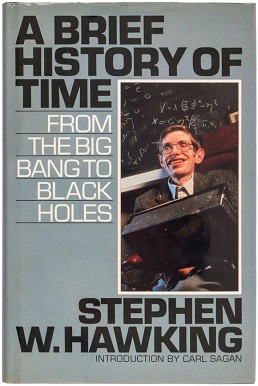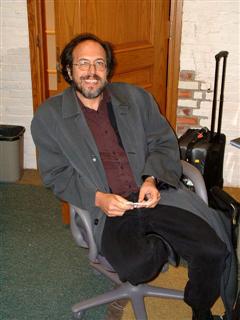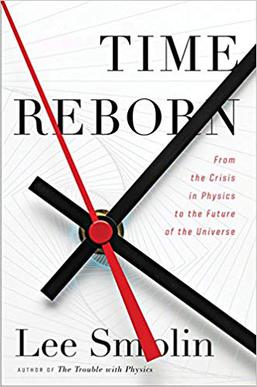The anthropic principle, also known as the "observation selection effect", is the hypothesis, first proposed in 1957 by Robert Dicke, that the range of possible observations that could be made about the universe is limited by the fact that observations could happen only in a universe capable of developing intelligent life. Proponents of the anthropic principle argue that it explains why the universe has the age and the fundamental physical constants necessary to accommodate conscious life, since if either had been different, no one would have been around to make observations. Anthropic reasoning is often used to deal with the idea that the universe seems to be finely tuned for the existence of life.

The multiverse is the hypothetical set of all universes. Together, these universes are presumed to comprise everything that exists: the entirety of space, time, matter, energy, information, and the physical laws and constants that describe them. The different universes within the multiverse are called "parallel universes", "flat universes", "other universes", "alternate universes", "multiple universes", "plane universes", "parent and child universes", "many universes", or "many worlds". One common assumption is that the multiverse is a "patchwork quilt of separate universes all bound by the same laws of physics."

Quantum gravity (QG) is a field of theoretical physics that seeks to describe gravity according to the principles of quantum mechanics. It deals with environments in which neither gravitational nor quantum effects can be ignored, such as in the vicinity of black holes or similar compact astrophysical objects, such as neutron stars as well as in the early stages of the universe moments after the Big Bang.
In physics, string theory is a theoretical framework in which the point-like particles of particle physics are replaced by one-dimensional objects called strings, and related objects. String theory describes how these strings propagate through space and interact with each other. On distance scales larger than the string scale, a string looks just like an ordinary particle, with its mass, charge, and other properties determined by the vibrational state of the string. In string theory, one of the many vibrational states of the string corresponds to the graviton, a quantum mechanical particle that carries the gravitational force. Thus, string theory is a theory of quantum gravity.

A theory of everything (TOE), final theory, ultimate theory, unified field theory or master theory is a hypothetical, singular, all-encompassing, coherent theoretical framework of physics that fully explains and links together all aspects of the universe. Finding a theory of everything is one of the major unsolved problems in physics.

Cosmogony is any model concerning the origin of the cosmos or the universe.

A Brief History of Time: From the Big Bang to Black Holes is a book on theoretical cosmology by English physicist Stephen Hawking. It was first published in 1988. Hawking wrote the book for readers who had no prior knowledge of physics.

In the philosophy of space and time, eternalism is an approach to the ontological nature of time, which takes the view that all existence in time is equally real, as opposed to presentism or the growing block universe theory of time, in which at least the future is not the same as any other time. Some forms of eternalism give time a similar ontology to that of space, as a dimension, with different times being as real as different places, and future events are "already there" in the same sense other places are already there, and that there is no objective flow of time.

Lee Smolin is an American theoretical physicist, a faculty member at the Perimeter Institute for Theoretical Physics, an adjunct professor of physics at the University of Waterloo and a member of the graduate faculty of the philosophy department at the University of Toronto. Smolin's 2006 book The Trouble with Physics criticized string theory as a viable scientific theory. He has made contributions to quantum gravity theory, in particular the approach known as loop quantum gravity. He advocates that the two primary approaches to quantum gravity, loop quantum gravity and string theory, can be reconciled as different aspects of the same underlying theory. He also advocates an alternative view on space and time that he calls temporal naturalism. His research interests also include cosmology, elementary particle theory, the foundations of quantum mechanics, and theoretical biology.
Vacuum energy is an underlying background energy that exists in space throughout the entire Universe. The vacuum energy is a special case of zero-point energy that relates to the quantum vacuum.
The heat death of the universe is a hypothesis on the ultimate fate of the universe, which suggests the universe will evolve to a state of no thermodynamic free energy, and will therefore be unable to sustain processes that increase entropy. Heat death does not imply any particular absolute temperature; it only requires that temperature differences or other processes may no longer be exploited to perform work. In the language of physics, this is when the universe reaches thermodynamic equilibrium.
The characterization of the universe as finely tuned suggests that the occurrence of life in the universe is very sensitive to the values of certain fundamental physical constants and that values different from the observed ones are more probable. If the values of any of certain free parameters in contemporary physical theories had differed only slightly from those observed, the evolution of the universe would have proceeded very differently, and "life as we know it" might not have been possible.

Leonard Susskind is an American theoretical physicist, Professor of theoretical physics in Stanford University and founding director of the Stanford Institute for Theoretical Physics. His research interests are string theory, quantum field theory, quantum statistical mechanics and quantum cosmology. He is a member of the US National Academy of Sciences, and the American Academy of Arts and Sciences, an associate member of the faculty of Canada's Perimeter Institute for Theoretical Physics, and a distinguished professor of the Korea Institute for Advanced Study.
In string theory, the string theory landscape is the collection of possible false vacua, together comprising a collective "landscape" of choices of parameters governing compactifications.
Cosmological natural selection, also called the fecund universes, is a hypothesis proposed by Lee Smolin intended as a scientific alternative to the anthropic principle. It addresses the problem of complexity in our universe, which is largely unexplained. The hypothesis suggests that a process analogous to biological natural selection applies at the grandest of scales. Smolin published the idea in 1992 and summarized it in a book aimed at a lay audience called The Life of the Cosmos.
Lorentz invariance measures the universal features in hypothetical loop quantum gravity universes. The various hypothetical multiverse loop quantum gravity universe design models could have various general covariant principle results.

The Trouble with Physics: The Rise of String Theory, the Fall of a Science, and What Comes Next is a 2006 book by the theoretical physicist Lee Smolin about the problems with string theory. The book strongly criticizes string theory and its prominence in contemporary theoretical physics, on the grounds that string theory has yet to come up with a single prediction that can be verified using any technology that is likely to be feasible within our lifetimes. Smolin also focuses on the difficulties faced by research in quantum gravity, and by current efforts to come up with a theory explaining all four fundamental interactions. The book is broadly concerned with the role of controversy and diversity of approaches in scientific processes and ethics.

General Relativity is a graduate textbook and reference on Albert Einstein's general theory of relativity written by the gravitational physicist Robert Wald.
The Kodama state in physics for loop quantum gravity, is a zero energy solution to the Schrödinger equation.

Time Reborn: From the Crisis in Physics to the Future of the Universe is a 2013 book by the American theoretical physicist Lee Smolin.










